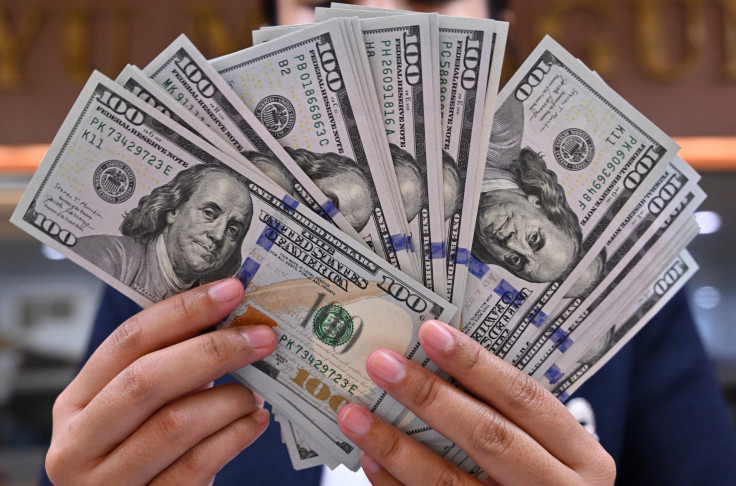US Government Economic Strategy: A Bold Vision for Currency, Trade and Public Debt

The newly elected U.S. government has set an ambitious agenda aimed at boosting productivity and restoring long-term economic strength. Central to this vision is the idea of "Making America Great Again," which envisions a nation not only capable of producing competitive goods and services domestically but also thriving in international markets.
To achieve this, the government aims to tackle the U.S. trade deficit and reshape its foreign trade dynamics through two key strategies.
The first strategy centers around imposing import duties on countries with protectionist policies that unfairly restrict U.S. products. By doing so, the administration hopes to level the playing field, ensuring fair trade practices.
The second strategy, however, presents a far more complex challenge: reducing the value of the U.S. dollar to make American goods and services more attractive abroad.
While a cheaper dollar might seem like an ideal solution for boosting exports, its implementation could be fraught with difficulties. Unlike smaller nations that can more easily devalue their currencies, the U.S. dollar has a unique role in the global economy. Its status as the world's primary reserve currency means that any efforts to devalue it could be counteracted by foreign governments accumulating more dollars for their reserves, undermining the intended effects.
Some experts argue that a rival currency could provide an alternative approach, offering both a competitive currency for trade and a strong currency for reserves. However, this would threaten the dollar's dominance, raising significant questions about the future of U.S. monetary policy.
Beyond currency devaluation, the incoming administration will also have to navigate the complexities of the nation's soaring national debt, which stood at $33 trillion by the end of 2023, equivalent to 123% of GDP. As most of this debt is financed through Treasury bonds, bills, and other securities, any attempt to devalue the dollar could undermine investor confidence, potentially increasing borrowing costs and complicating future fiscal management.
In response to this fiscal challenge, the new administration has proposed cutting federal spending and reducing taxes, both of which could stimulate private sector investment and economic growth. Historically, tax cuts have led to increased employment, innovation, and productivity, which could help offset the potential downside of a weaker dollar by driving domestic demand for U.S. goods and services. However, a stronger economy and higher investment could also place upward pressure on the value of the dollar, complicating efforts to achieve a more competitive currency for trade.
Another hurdle in this strategy is the role of the Federal Reserve (Fed), which must balance monetary policy to ensure a sufficient money supply for economic growth without triggering inflation. A devalued dollar may introduce inflationary pressures, which could derail the administration's broader economic goals.
Historically, countries have successfully stimulated growth by actively devaluing their currencies, but this approach is often most effective for economies focused on a narrow range of specialized exports. For the U.S., a diversified economy with a wide array of industries may not benefit equally from a weaker currency.
To better understand the complexities of the U.S. dollar, it's useful to look at the experience of the United Kingdom before World War II.
The UK maintained a strong, gold-backed currency while still supporting a productive industrial base. Unlike the U.S., which transitioned off the gold standard in 1971, the UK's gold-backed currency limited the government's ability to implement policies to promote economic growth. This historical example highlights the challenges of balancing currency value with economic flexibility.
Given the challenges of maintaining the dollar's dominance while pursuing a more competitive exchange rate, one potential solution involves issuing new debt instruments backed by a tangible asset, such as gold.
The U.S. currently holds 8,143 metric tons of gold, worth around $543.5 billion—roughly 60% of its current deficit. By issuing gold-backed Treasury bonds, the U.S. government could offer debt instruments with lower interest rates, thus easing the burden of public debt payments. This would separate the objectives of monetary policy (managed by the Federal Reserve) from fiscal policy (managed by the federal government), potentially creating a more stable and predictable economic environment.
Furthermore, tying public debt issuance to gold reserves could restore fiscal discipline, limiting the size of future debt issuance and providing a clear boundary for government spending.
This strategy could help mitigate inflationary pressures while maintaining the dollar's role as a global reserve currency, offering a competitive edge for international trade.
In summary, the incoming U.S. administration faces a delicate balancing act: stimulating economic growth, reducing trade deficits, and maintaining the dollar's global dominance.
By exploring innovative solutions, including the potential for gold-backed debt instruments, the U.S. could successfully navigate these challenges and achieve a sustainable and competitive economic future.
Luciano Duque is Chief Investment Officer for C3 Bullion.
© Copyright IBTimes 2024. All rights reserved.






















